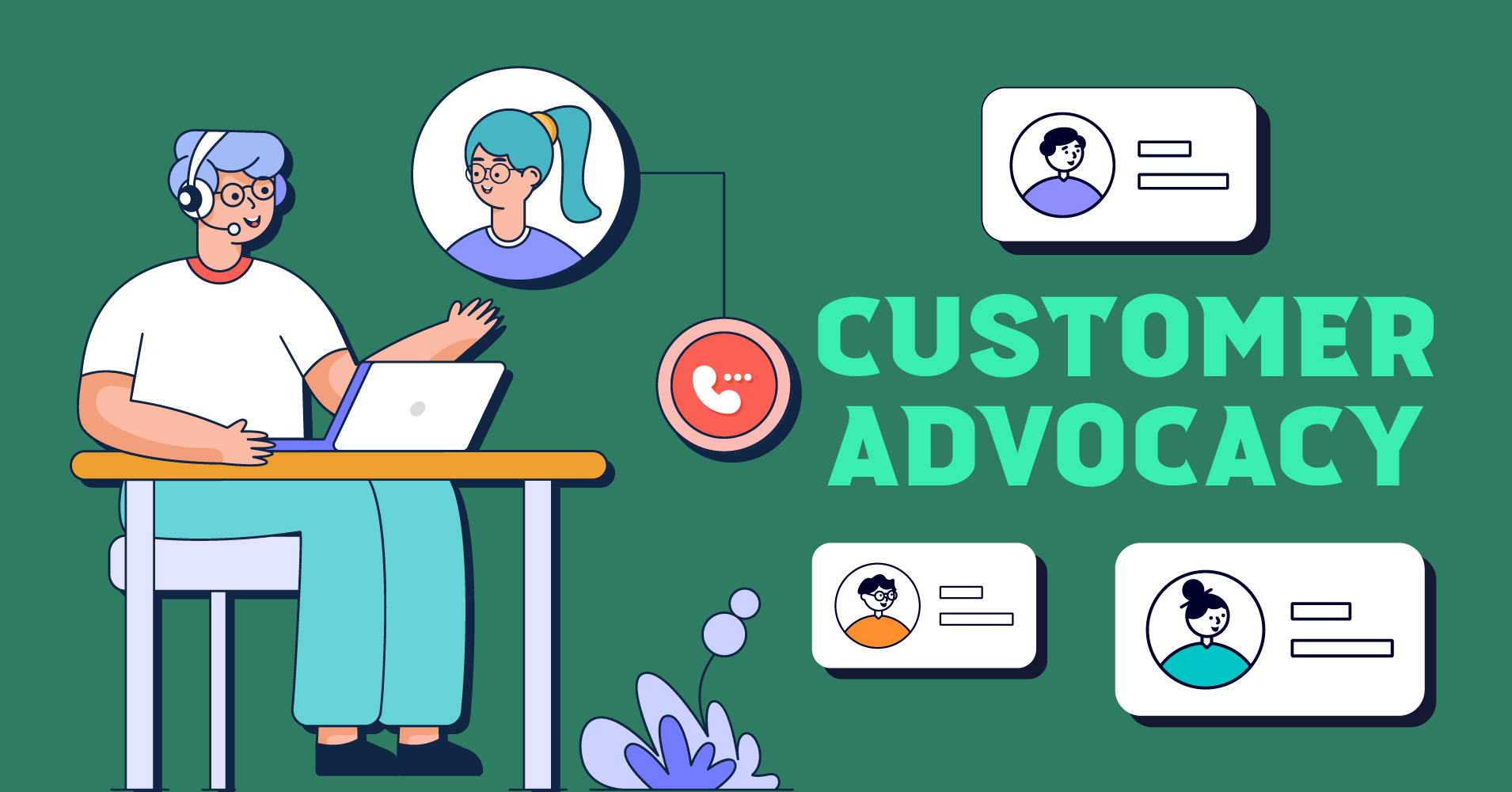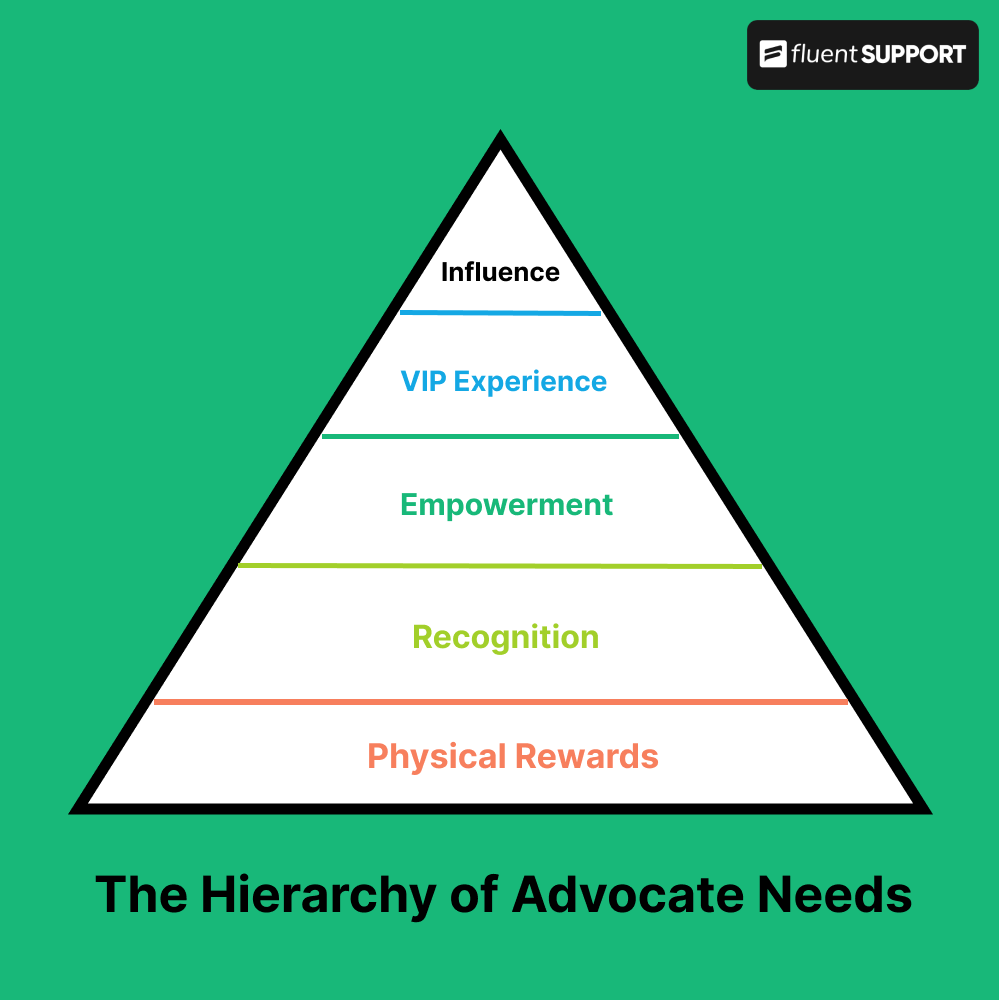
Customer Advocacy: Meaning, Examples, Strategies, Framework
In today’s blog post, we’ll be exploring its definition, examples, strategies, roles, framework, and much more. Also, we’ll explain why businesses must prioritize the needs and satisfaction of their consumers.
In the early days of commerce, customer service was often seen as a necessary cost of doing business rather than a potential source of competitive advantage.
They were expected to accept the products or services they purchased without question. And then, companies were under no obligation to address their concerns or complaints.
However, as competition increased and consumers became more discerning, companies began to realize the value of building strong customer relationships.
This led to the development of customer advocacy programs. It sought to listen and respond to consumer feedback to improve the customer experience and build customer loyalty.
Now, this is essential to many businesses’ operations. Companies worldwide constantly look for ways to better support and defend their consumers’ interests. And, for those who don’t have any idea or are trying to build a solid grip on the concept, this blog is for you.
Before we continue, let’s ensure we’re all on the same page. Here’s how we define customer advocacy.
What is Customer Advocacy?
Customer advocacy means the practice of promoting and supporting the interests of your customers. It is a key aspect of good customer service. And this can help to build trust, loyalty, and satisfaction among your client base.
Customer advocacy involves putting your customers’ wants, needs, and expectations first in all of your business decision-making, not just marketing or customer service.
By prioritizing your consumers, you have a greater chance of creating happy customers who will become your brand advocates or ambassadors.
Importance of customer advocacy
According to a HubSpot report, 42% of companies never even conduct customer surveys or gather feedback. These companies may claim or think to have their consumers’ best interests at heart, but their actions do not always reflect this.
Only a small minority of customers, approximately 12%, believe that businesses that claim to prioritize their needs actually do so.
Therefore, it is important for businesses to not only talk the talk but also walk the walk when it comes to putting their consumers first. Here are a few key reasons why customer advocacy is so important.
- Firstly, prioritizing consumer needs can improve the overall customer experience and increase customer satisfaction. This can lead to increased loyalty and repeat business from consumers.
- Secondly, businesses can find areas for improvement and put strategies in place to address them by actively listening to and responding to their clients’ input. It will help to prevent customer churn by ensuring consumers’ happiness and satisfaction with the content, goods, or services.
- Finally, by making the customer’s feedback your first priority in decision-making processes, businesses can ensure that they are meeting the needs of their clients and staying competitive in their market.
Customer advocacy framework
When it comes to customer advocacy, it definitely means serious business. All company members must be on board with this approach and ready to jump in with both feet.

To make customer advocacy a key part of your business, you need a framework to bring it to life. First, consider what they really need. The hierarchy of advocate needs outlines the various types of needs that every customer will have: basic, emotional, and self-actualization.
But even with this knowledge, how can you ensure that your team adopts the concept to deliver the goods?
Well, we at Fluent Support, the best helpdesk wordpress plugin for customer support, have some advice. Focus on four key areas to make customer advocacy a mainstay of your business. These areas are:
- Exploration
- Motivation
- Activation
- Iteration
In the Exploration stage, you must focus on developing a deep understanding of your customers. How can you truly deliver what they need if you don’t know what they’re going through? Reach out to your customers and collect data and analyze it.
Once you understand them, it’s time to Motivate your team to start advocating for them. In this stage, you might need to look at your team’s relationships with users/buyers and how you provide support.
Next, it’s time to Activate. Implement customer-driven solutions and upgrade the overall customer experience. Positive experiences with your product and brand will be what your product’s users/buyers share.
Finally, you’ll enter the Iteration stage. This is where you assess what’s working and make changes as needed. You might not get it right the first time, so take some time to make changes based on customer feedback.
With this framework in place, you can start implementing a customer advocacy program in your organization. Just remember, it’s not rocket science. But it’s definitely not a joke, either.
Great customer advocacy examples
There are many examples of companies that have successfully implemented customer-focused strategies to improve their products and services and drive business growth.
For example, companies like Amazon, Apple, and Zappos have implemented all the key customer advocacy strategies.
Here are some excellent examples that those big companies have already implemented. You can follow their footsteps to some extent to make your business a story of success:
- They actively listen to consumers. Also, they incorporate it into their product development process, resulting in products that better meet the needs of their consumers.
- Implement a client advocacy team to collect and share their insights with other departments. This leads to improved customer service and support.
- Regularly survey consumers to measure satisfaction levels and identify areas for improvement. Finally, use this feedback to make changes to their products or services.
- These businesses train their customer-facing teams to prioritize customers’ needs and provide exceptional service. This leads to increased customer loyalty and positive word-of-mouth advertising.
- A company consistently advocates for the interests of its consumers within the organization, ensuring that their voice is heard in decision-making processes. This leads to better-informed decisions and improved customer experiences.
Roles of a customer service advocate
A customer service advocate is a person who is dedicated to representing the needs and interests of customers. They often act as a liaison between consumers and a company, providing support and assistance with any issues or concerns that may arise.
The advocates are committed to ensuring that the customer experience is positive and satisfactory, and they work tirelessly to resolve any problems or challenges that consumers may face.
Although the roles of a customer advocate can vary depending on the organization, some common responsibilities may include the following:
- Sharing customer feedback and insights with internal teams.
- Working with customer-facing teams to improve the customer experience.
- Ensuring that their voice is heard in decision-making processes.
- Representing the interests of consumers within the organization.
- Building and maintaining strong relationships with consumers.
- Identifying opportunities for improving their experience and driving loyalty.
- Monitoring their satisfaction levels and identifying areas for improvement.
- Collaborating with other departments to resolve customer issues and improve the customer journey.
- Advocating for the needs and interests of consumers at all levels of the organization.
Customer advocacy strategies
There are several strategies that businesses can use for customer advocacy:
1. Listen to your customers
Make an effort to listen to them and understand their concerns and needs actively. As we said earlier, this can be done through various channels, such as social media, email, or phone, and it can help to show your customers that you value their feedback and are willing to make changes to improve their experience.
2. Address customer concerns promptly
When a consumer raises an issue or concern, it is important to respond to them in a timely and responsive manner. This can help to show your consumers that you care about their needs and are willing to take action to address their concerns.
3. Be transparent
Be open and honest about your products and services, and provide clear and accurate information to your consumers. This can help to build trust and credibility, and it can also help to prevent misunderstandings or conflicts.
4. Offer personalized support
Provide personalized support to your customers, tailoring your assistance to their individual needs and preferences. This can help build a strong relationship with your customers and improve their overall experience with your business.
5. Solicit customer feedback
Regularly solicit customer feedback and use this information to improve your products, services, and overall experience. This can demonstrate to your customers that you value their feedback and are willing to change based on it.
6. Reward loyal customers
Show appreciation for your loyal customers by offering them special rewards or perks. This can help strengthen the relationship with your customers and encourage them to continue doing business with you.
Always remember the following quote,
Wrapping up
Today’s brands should place a high priority on providing incredible customer experiences throughout the whole customer journey. According to PwC, “63% of U.S. consumers would share more personal information with a company that offers a great experience.”
This is the secret to building long-term customer advocacy. And, while there are many ways to create a better, more engaging consumer experience, one winning approach is implementing customer self-service solutions on your site.
Whether you deploy a comprehensive knowledge base, a dynamic FAQ, an intelligent chatbot, an in-context help widget—or all of the above—putting more and better information in your customers’ hands whenever and wherever they need it will make them super happy.
The happier they are, the more likely they’ll remain loyal to your brand over the long run—and if you’ve put a solid customer advocacy program in place, they’ll likely become brand advocates, too.
Thank you for reading. We hope you enjoyed the journey with us.













Leave a Reply